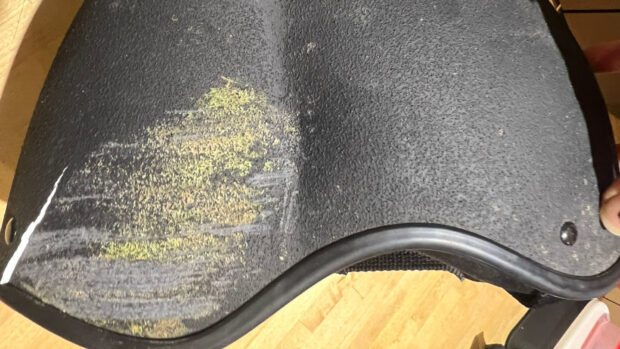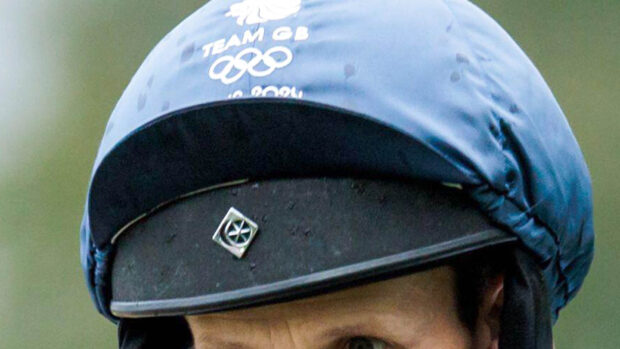As the ban on head cameras still stands in British Eventing (BE) competitions, a new camera has been developed that has been approved by the British Horseracing Authority (BHA).
JockeyCam, part-funded by Channel 4, was used at Aintree last month (9-11 April).
Riders, including Grand National winner Leighton Aspell (pictured above), wore the devices providing thrilling footage for viewers.
The camera is attached to the helmet with a piece of elastic, similar to a pair of goggles, and weighs 74g.
Equine Productions came up with the idea after seeing a camera in a pair of sunglasses produced by Lyte at BETA International trade exhibition in 2013.
“We wanted to show all the thrills and spills that riders go through,” Nathan Horrocks of the company told H&H. “These have had all the safety checks and fit on the helmet like goggles.”
The British Racing School and helmet makers Charles Owen tested the camera.
“This helmet camera design has been permitted for use in a race by the BHA chief medical advisor, in conjunction with the Professional Jockeys Association,” said a BHA spokesman. “The model designed by Equine Productions passed the necessary testing and was given the final approval in March.”
Jockey Noel Fehily thinks the cameras give viewers a “very good insight” into the action.
Having worn a mounted camera in the past, he supports this new design.
“I wore a fixed helmet camera once during a race, and it hurt when I hit the ground,” he told H&H.
“I certainly wouldn’t wear one again, I do think they’re dangerous. I was lucky to get away with it, I hit the ground face-first and it didn’t allow me to slide. It even bruised my forehead through the helmet. These ones would fly off and cause no damage in a fall.
“It’s fantastic for people to be able to see what riders are seeing — fans think it’s easy but with this you can see how quickly things happen.”
Last year BE brought in a blanket ban on the devices due to the lack of information on whether it can worsen an injury in a fall.
The United States Equestrian Federation and Eventing Ireland both followed suit, but have since reversed their decision.
But BE stands by its decision.
“The reality is that there are not many riders who wish to wear cameras during competition and for BE to spend a considerable amount on research is not considered to be best use of what is essentially members’ money,” a spokesman told H&H.
“If any further and appropriate information becomes available, then the decision can be reconsidered.”
Mr Horrocks told H&H he would be approaching BE and the organisation’s medical advisor.
In November amateur rider Jean-Marc Piednoir developed the Cambox ISIS.
The design, which fits under the peak of a hat, weighs only 38g and has two arms designed to take the impact during a fall.
Eventer Joseph Murphy rides with this camera.
“I wasn’t surprised by the ban as some of the cameras were so big that it was just a matter of time,” he said.
“The first thing that drew me to this product is how discreet it is. A lot of people don’t even know that I have it on.”
Video by Channel 4 Racing




